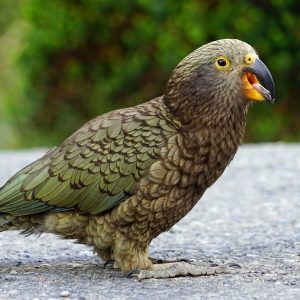 Every time we turn our heads, we discover another facet of the intelligence diamond that are parrots. As we technologically advance, research and studies on many things improve. Scientific research can delve deeper into the mind and abilities of parrots and other birds. As they do, they discover amazing new things. None of the new discoveries are mundane or repetitive (“same old, same old”). In fact, they reveal even more brainiac moments of our current birds that underscore their intrinsic ability to become more aware of their surroundings and their need to interact with it. That alone is impressive. Let’s see what our birds are up to now.
Every time we turn our heads, we discover another facet of the intelligence diamond that are parrots. As we technologically advance, research and studies on many things improve. Scientific research can delve deeper into the mind and abilities of parrots and other birds. As they do, they discover amazing new things. None of the new discoveries are mundane or repetitive (“same old, same old”). In fact, they reveal even more brainiac moments of our current birds that underscore their intrinsic ability to become more aware of their surroundings and their need to interact with it. That alone is impressive. Let’s see what our birds are up to now.
A Reality Test
A recently published paper in the scientific journal Biology Letters by three researchers from the University of Auckland further investigated the cognitive capabilities of the endangered Kea parrot. In this new study, the researchers explored the parrot’s interest and ability on a computer touchscreen. In this, the ability of the Kea to distinguish reality versus virtual images of an object was tested to see if they are “naïve realists.” The objective of this testing was to discover whether the birds could separate real from virtual regarding a result. “Naive realists” are unable to determine the difference.
The selected six parrots could manipulate real boxes and get an actual ball return with no problem. They could also replicate that experience using a computerized box to get a virtual ball in return. But the problems occurred when a parrot expected an actual result from the computer manipulation. Actual boxes were then placed on sides of computerized images of the similar box. The six subject parrots became confused when the manipulation of the computer box did not produce an actual ball. A similar test with 19-month-old infants reveals that humans can separate virtual results from actual results where one or the other are expected. The purpose of this similar testing on the Kea was a hope to discover a human-like trait in cognitive recognition. In short, to discover if the Kea – and perhaps other parrots – could understand the difference between what is real and not is not real.
Parrots with Computer Skills
This study produced the current understanding that the Kea treats the real and the virtual – or unreal – world as the same thing, continuous and equivalent realities. While these tests might seem to be a useless endeavor, it, in fact, provides the first realization that that virtual stimulus can become a powerful tool in testing all avian species. The birds could not recognize real and virtual differences, but they could be trained using virtual puzzles and rewards. This could help train avian species to understand more in the future with computerized programs. Amazingly, these Keas learned to use a touchscreen computer by licking the virtual object on the screen.
For now, researchers continue to explore the actualized intelligence of parrots and other avian species. This and other emerging tests discover increasingly important and informative data as they pertain to the mind and intent of a bird that expects a specific result from an action. Intense testing such as this one will give us a more effective understanding of the parrot’s ability to interact with its environment and, subsequently, to survive a changing world. In the future, we can learn if birds ever stop acting like “naïve realists” and become able to differentiate the real from the unreal. That will move the bird into the next realm of intelligence and open newer vistas of understanding for dedicated researchers. Here is a link to a video that shows just how these Keas participated in this study.






I am mom to an Amazon Yellow Nape. She is 31. years old and a smart girl. Raised her from baby hand fed. I am fascinated by her emotions and observational abilities. This article gives me additional information in parrot intelligence.
I wonder the extent to which they are naive realists. For example, would they recognize that a predator on the computer was not a genuine threat? A second question: do they eventually learn that what is on the screen is virtual rather than real? To use the predator example again, if they believe that the predator on the screen is a threat initially, do they eventually learn that it is not?
I hope they perform some experiments that follow up on these sorts of questions.
That’s very interesting and excellent thinking, SG.